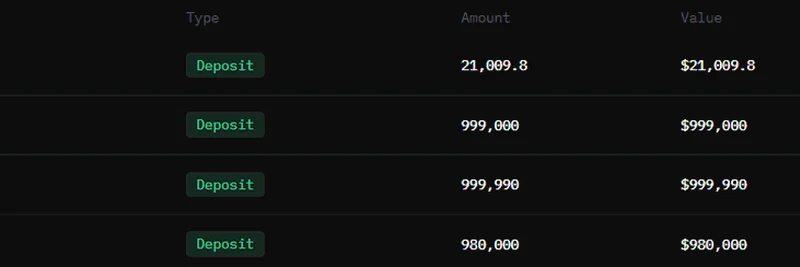Solana vs Ethereum Finality: The Regulatory Showdown
Hey there, crypto enthusiasts! If you’ve been scrolling through X lately, you might have stumbled upon a hot topic raised by MartyParty in a thread that’s got everyone talking. The post, originally shared on June 30, 2025, dives into the clash between Solana and Ethereum when it comes to transaction finality—and how this could shape their future in regulated markets. Let’s break it down in a way that’s easy to digest, even if you’re new to the blockchain game!
What’s Transaction Finality, Anyway?
Before we jump into the Solana vs Ethereum debate, let’s clarify what “finality” means. In blockchain terms, finality is the point where a transaction is locked in and can’t be reversed or changed. Think of it like sealing a deal with a handshake—once it’s done, it’s done! This is super important, especially for financial applications like trading derivatives or tokenized assets, where regulators (like the SEC or CFTC) want clear proof of ownership.
Ethereum L2: The Delay Dilemma
Ethereum’s Layer 2 (L2) solutions, like Optimistic Rollups and ZK-Rollups, aim to speed up transactions by handling them off the main chain (Layer 1). But here’s the catch: they come with a delay. Optimistic Rollups, for instance, have a 7-day challenge period where transactions can be disputed. ZK-Rollups are faster (a few hours), but still lag behind instant settlement. MartyParty points out that this delay could be a red flag for regulators who need immediate, irrevocable proof of ownership—especially for high-stakes assets like a Tesla derivative traded on an L2.
This uncertainty might mean L2 transactions aren’t legally binding until they hit Ethereum’s Layer 1, creating a compliance headache. Imagine waiting a week to confirm you own a digital asset—that’s a dealbreaker for fast-paced trading!
Solana’s Instant Edge
Now, let’s flip the coin to Solana. With its Layer 1 design, Solana boasts near-instant finality—transactions settle in just 2-3 seconds. That’s lightning-fast compared to Ethereum’s L2 delays! Marty argues this speed aligns perfectly with traditional finance’s need for quick, definitive settlements, giving Solana a leg up with regulators. Plus, Solana’s ledger provides a clear audit trail, making it easier for authorities to track and verify transactions.
Why It Matters for Meme Tokens and Beyond
If you’re into meme tokens (and hey, who isn’t?), this debate is worth watching. Meme tokens often ride the waves of hype on blockchains like Solana or Ethereum. Solana’s speed could make it a go-to for meme token projects needing fast, compliant transactions—think of it as the racetrack for your favorite digital dog coins! Meanwhile, Ethereum’s L2 struggles might push developers to rethink how they build on its ecosystem, especially for regulated use cases.
The Community’s Take
The X thread sparked some lively reactions. Some users, like AbelGaming, accused Marty of shilling Solana due to his holdings (check out that portfolio screenshot!), while others, like carwrangler, were shocked to learn about the 7-day L2 delay. It’s clear this topic’s got people buzzing, with opinions split between Solana fans and Ethereum loyalists.
What’s Next?
So, does Solana’s finality give it a regulatory edge in 2025? It’s a strong contender, especially for applications where speed and legal clarity are non-negotiable. Ethereum’s L2 solutions might catch up with tech improvements, but for now, the delay could hold them back in regulated spaces. Keep an eye on how regulators like the SEC respond—their rulings could shape the future of blockchain adoption!
What do you think? Are you team Solana or team Ethereum? Drop your thoughts in the comments, and let’s keep the conversation going. For more juicy blockchain insights, check out Meme Insider and stay ahead of the meme token curve!


